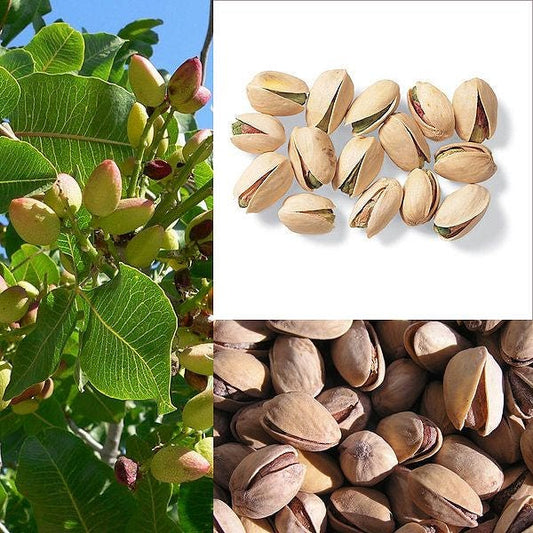






Experience the satisfaction of growing your own Pistachio Trees with these high-quality Non-GMO seeds. Native to the Middle East and Central Asia, Pistacia vera trees are admired for their resilience, beauty, and valuable nut production.
Perfect for gardeners in warm, dry climates, Pistachio Nut Tree Seeds produce hardy, long-lived trees with attractive foliage and clusters of delicious nuts. They make a rewarding addition to home orchards, farms, or large landscapes.
Premium Non-GMO Pistachio Tree Seeds for reliable germination
Produces nut-bearing trees with distinctive compound leaves
Thrives in warm, dry, sunny regions
Excellent for home orchards, farms, or large gardens
Long lifespan with consistent nut production
Low-maintenance and drought-tolerant once established
Valuable hardwood tree with ornamental appeal
Common Name: Pistachio
Scientific Name: Pistacia vera
Plant Type: Deciduous nut-bearing tree
Seed Type: Non-GMO
Growth Habit: Upright, branching canopy
Height: 20–30 feet at maturity
Light Requirements: Full sunlight
Soil Type: Well-drained sandy or loamy soil
Watering: Low to moderate; drought-tolerant after establishment
Season: Best sown in late winter to early spring
USDA Hardiness Zones: 8–10
Germination Time: 4–8 weeks after stratification
Temperature for Germination: 20–30°C (68–86°F)
Maturity: 5–7 years for nut production under ideal conditions
Pollination: Dioecious (requires both male and female trees for nuts)
Lifespan: 80–100 years
Uses: Nut production, shade, ornamental landscaping
Soak seeds in warm water for 24 hours before planting.
Cold stratify seeds for 4–6 weeks at 3–5°C (37–41°F) to improve germination.
Prepare seed trays or pots with sandy, well-draining soil.
Plant seeds about 1 inch deep and water lightly.
Keep in a warm, sunny location with consistent moisture.
Transplant seedlings when they reach 6–8 inches in height.
Choose a sunny outdoor location with at least 6–8 hours of daily light.
Water deeply but infrequently once established.
For nut production, plant both male and female trees within 30–50 feet of each other.
Choose options




